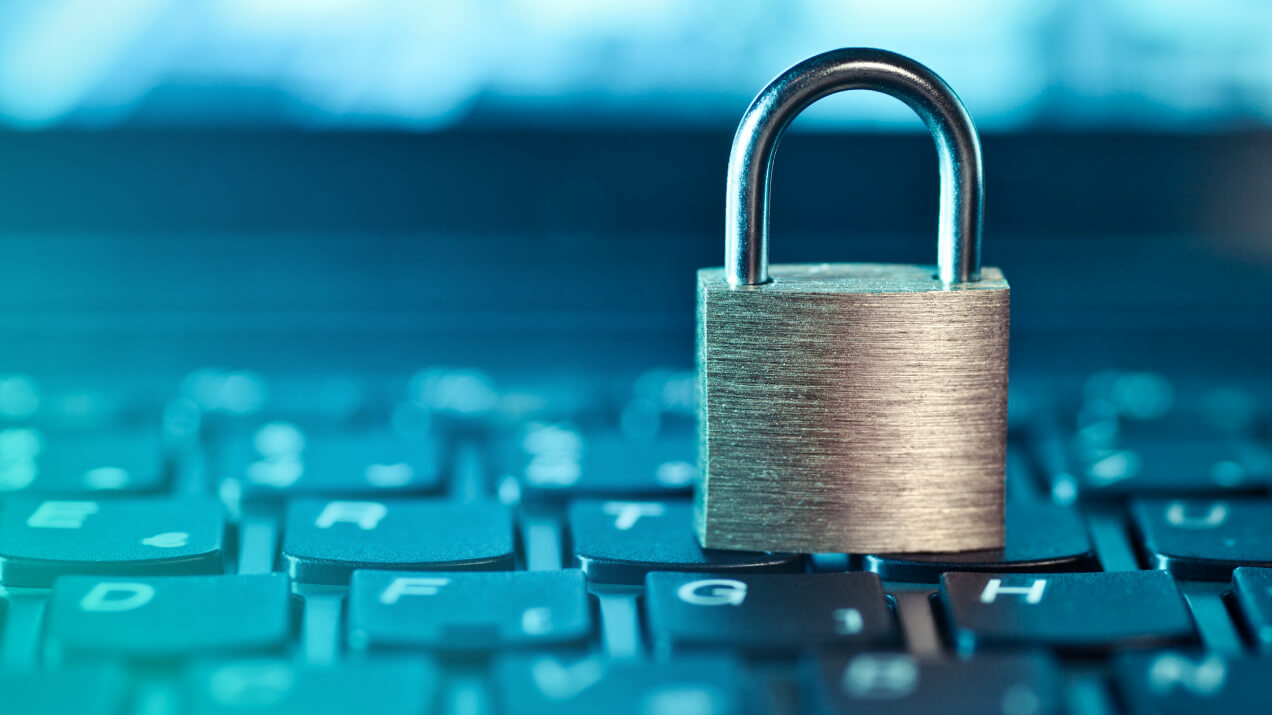News
Data Protection and People’s Rights Under Nigeria’s Data Protection Regulations (NDPR): Know Your Rights

Data Protection and People’s Rights Under Nigeria’s Data Protection Regulations (NDPR): Know Your Rights
In a time where private information is more and more important and at risk of being exploited, safeguarding people’s privacy is now a significant priority. The implementation of the Nigeria Data Protection Regulation (NDPR) in 2019 in Nigeria is a major move in protecting citizens’ personal information and ensuring organizations follow legal and ethical guidelines when handling data. As the number of Nigerians participating in digital activities like online banking, e-commerce, and social media increases, the NDPR is fundamental in influencing the collection, processing, and protection of data. This article examines the main provisions of the NDPR, the privileges it provides to people, and its influence on companies and the digital environment in Nigeria.
What Is NDPR?
The National Information Technology Development Agency (NITDA) introduced the Nigeria Data Protection Regulation (NDPR) in January 2019. The NDPR was created to tackle the increasing concerns about personal data misuse in both private and public sectors. It is in line with worldwide data protection trends, like the European Union’s General Data Protection Regulation (GDPR), while also meeting the unique requirements of Nigeria’s digital environment.
The goal of the regulation is to safeguard Nigerian citizens’ data from unauthorized access, exposure, or exploitation. It includes a range of industries like finance, telecom, education, health, and online shopping, which commonly involve gathering and handling personal data.
Key Provisions of the NDPR
The NDPR outlines specific guidelines on how organizations should handle personal data. Some of the provision as outlines in NDPR guidelines are:
Data Collection and Consent: Organizations must obtain explicit consent from individuals before collecting their personal data. This ensures that data subjects are fully aware of what information is being collected, the purpose of its collection, and how it will be used.
Data Processing: The regulation mandates that personal data should only be processed for legitimate and specified purposes. Organizations must ensure that the data is accurate and kept up to date. Processing personal data for purposes other than those originally specified is not permitted without further consent from the individual.
Data Security: One of the core elements of the NDPR is the requirement for organizations to implement adequate security measures to protect personal data. This includes safeguarding data from unauthorized access, data breaches, or any form of manipulation.
Third-Party Sharing: If personal data is to be shared with third parties, the organization must inform the data subject and obtain their consent. The third party must also adhere to the same level of data protection as stipulated by the NDPR.
Data Breach Notifications: In the event of a data breach, organizations are required to notify the affected individuals and NITDA within a specified period. This provision ensures that individuals can take action to mitigate the effects of a breach.
People’s Rights Under The NDPR
The acknowledgement of people’s rights regarding their personal data is a key aspect of the NDPR. The rule gives Nigerians various rights to manage how their data is treated. Some of the right are:
- Right to be Informed: Individuals have the right to be informed about the collection and use of their personal data. Organizations are required to provide transparent information on the types of data collected, the purpose of the collection, and how long the data will be retained.
- Right to Access: Data subjects have the right to request access to their personal data held by an organization. This means they can inquire about the specific data collected, the reasons for its collection, and whether it has been shared with third parties.
- Right to Rectification: If an individual’s personal data is inaccurate or incomplete, they have the right to request that the organization correct or update the information.
- Right to Erasure (Right to be Forgotten): Under certain circumstances, individuals can request that their personal data be deleted. This is particularly relevant if the data is no longer necessary for the purpose it was originally collected or if the individual withdraws their consent for its processing.
- Right to Data Portability: This allows individuals to obtain and reuse their personal data across different services. They have the right to request that their data be transferred from one service provider to another in a commonly used, machine-readable format.
- Right to Object: Individuals have the right to object to the processing of their personal data in cases where the processing is based on legitimate interests or public tasks, direct marketing, or scientific/historical research.
Rights Of Individuals In Cases Of Data Misuse, Breaches, Or Use Without Consent
The NDPR grants the data subject particular rights and solutions if their data is mismanaged, disclosed, or utilized without authorization. These rights give individuals the ability to find a solution and shield themselves from additional damage. Some important rights in such situations include:
- Right to lodge a complaint:
According to Section 3.1.1(e) of the NDPR, individuals have the option to file a complaint with NITDA or other authorized regulatory entities if they suspect their data has been mishandled, processed illegally, or exposed. This privilege allows people to seek legal recourse in cases of mishandling of their information by a company.
- Right to Compensation
The NDPR acknowledges the entitlement to receive compensation for harm caused by data breaches or unauthorized data handling. Individuals can request compensation from the data controller under section 2.10 of the NDPR if they can prove that their data rights violation resulted in harm. This clause guarantees that individuals affected by data breaches can receive compensation for any financial losses, emotional distress, or harm to their reputation.
- Right to withdraw consent
Individuals can revoke their consent for the processing of their personal data whenever they choose. As per Section 2.8 of the NDPR, organizations must respect these requests and stop processing the individual’s data unless there are strong legitimate reasons for the processing. This right is important when data is utilized without permission, enabling individuals to take back control of their personal information.
- Right to Data Erasure
If personal data is breached or used without authorization, individuals have the right to request erasure. According to Section 3.1.2(f) of the NDPR, individuals have the right to ask for the deletion of their personal data if it has been used without permission or if the reason for collecting the data is no longer valid. This right, sometimes referred to as the “right to be forgotten,” guarantees that unauthorized data use is stopped and eliminated from any future handling.
- Right to Restriction of Processing
If someone believes their data has been mishandled or misused, they can ask for processing restrictions under Section 2.10.2. This right enables people to halt additional data processing during ongoing investigations. It serves as a protection, making sure no additional damage occurs during the resolution of the problem.
Benefits To Individuals
When individuals’ rights are breached under the NDPR, they are eligible for certain benefits.
- Reclaiming Privacy: Through exercising the right to be forgotten or limiting additional data processing, individuals can take back authority over their personal information and reduce the consequences of its unauthorized exploitation.
- Financial Compensation: If individuals experience financial loss or emotional distress due to a data breach or misuse, they have the right to request financial compensation from the organization at fault. This serves as a deterrent for careless data handlers and compensates for the damages they cause.
- Legal Remedy: By utilizing the NDPR’s complaint procedures and regulatory supervision, people have the opportunity to take legal measures or regulatory actions to hold those responsible for data misuse or breaches accountable.
- Public Trust: The NDPR’s protections promote trust in the digital world, inspiring people to engage in online activities knowing their data rights are secure.
Compliance Requirements For Organizations
In order to comply with the NDPR, organizations must meet various obligations related to compliance. Some of these items are:
- Appointment of Data Protection Officers (DPOs): Organizations that process a large volume of personal data must appoint a DPO to oversee compliance with the NDPR and ensure the organization’s data practices are in line with the regulation.
- Annual Data Protection Audit: Organizations are required to conduct annual data protection audits and submit the reports to NITDA. This process helps organizations identify potential risks and ensure that they are taking the necessary steps to protect personal data.
- Fines for Non-Compliance: Failure to comply with the NDPR can result in significant penalties, including fines of up to 10 million Naira or 2% of an organization’s annual revenue, depending on the nature and severity of the breach.
Challenges and Gaps in NDPR Implementation
Even though the NDPR has created a strong foundation for safeguarding data in Nigeria, there are still obstacles in its execution. An important obstacle is the lack of public awareness and law enforcement. A large number of Nigerian citizens are still not completely informed about their data rights or the responsibilities that organizations have under the NDPR. Raising public education and awareness is essential in order to give citizens the power to safeguard their privacy.
Another difficulty that must be addressed is ensuring compliance. While NITDA has made progress in encouraging adherence, there are doubts about the agency’s ability to ensure proper enforcement of regulations, especially with major international companies, government agencies and smaller domestic enterprises.
Conclusions
The NDPR in Nigeria sets up rules for data protection and gives individuals rights to safeguard their personal information. The regulation offers various solutions, such as compensation and erasure rights, in situations where there is data misuse, breaches, or unauthorized processing. These safeguards are essential for establishing confidence in Nigeria’s fast-developing digital economy and guaranteeing the preservation of privacy in the era of digital technology. As the public becomes more aware of their data rights and enforcement becomes more rigorous, the NDPR will remain vital in influencing Nigeria’s digital future.
Written By Ibrahim Abuh Sani, Co-Founder, Eybrids.

Abu Ibrahim Sani, Co-Founder, Eybrids
Headlines
Noble Ladies Champion Women’s Financial Independence at Grand Inauguration in Abuja

Women from diverse backgrounds across Nigeria and beyond gathered at the Art and Culture Auditorium, Abuja, for the inauguration and convention of the Noble Ladies Association. The event, led by the association’s Founder and “visionary and polished Queen Mother,” Mrs. Margaret Chigozie Mkpuma, was a colourful display of feminine elegance, empowerment, and ambition.
The highly anticipated gathering, attended by over 700 members and counting, reflected the association’s mission to help women realise their potential while shifting mindsets away from dependency and over-glamorization of the ‘white collar job.’ According to the group, progress can be better achieved through innovation and creativity. “When a woman is able to earn and blossom on her own she has no reason to look at herself as a second fiddle,” the association stated.
One of the association’s standout initiatives is its women-only investment platform, which currently offers a minimum entry of ₦100,000 with a return of ₦130,000 over 30 days—an interest rate of 30 percent. Some members invest as much as ₦1 million, enjoying the same return rate. Mrs. Mkpuma explained that the scheme focuses on women because “women bear the greater brunt of poverty” and the platform seeks “to offer equity in the absence of economic equality.”
Education is also central to the Noble Ladies’ mission, regardless of age. Their mantra, “start again from where you stopped,” encourages women to return to school or upgrade their skills at any stage in life. The association believes that financial stability is vital in protecting women from cultural practices that dispossess widows of their late husbands’ assets, while also enabling them to raise morally and socially grounded families.
Founded on the vision of enhancing women’s skills and achieving financial stability, the association rests on a value system that discourages pity and promotes purpose. “You have a purpose and you build on that purpose to achieve great potentials and emancipation,” Mrs. Mkpuma said.
A criminologist by training and entrepreneur by practice, she cautions against idleness while waiting for formal employment. “There are billions in the informal and non-formal sectors waiting to be made,” she said, rejecting the “new normal of begging” and urging people to “be more introspective to find their purpose in life and hold on to it.”
Mrs. Mkpuma’s management style keeps members actively engaged, focusing on vocational skills and training to prepare them for competitive markets. She is exploring “innovative integration of uncommon technologies” and is already in talks with international franchises to invest in Nigeria, with Noble Ladies as first beneficiaries.
The association’s core values include mutual respect, innovation, forward-thinking, equal opportunity, and financial emancipation. With plans underway to establish a secretariat in the heart of Abuja, the group aims to expand its impact.
The event drew high-profile guests, including former Inspector General of Police, Mike Okiro, and a host of VIPs, marking a significant milestone in the association’s drive for women’s empowerment.
Headlines
NEPZA, FCT agree to create world-class FTZ environment

The Nigeria Export Processing Zones Authority (NEPZA) has stepped in to resolve the dispute between the Federal Capital Territory Administration and the Abuja Technology Village (ATV), a licensed Free Trade Zone, over the potential revocation of the zone’s land title.
Dr. Olufemi Ogunyemi, the Managing Director of NEPZA, urged ATV operators and investors to withdraw the lawsuit filed against the FCT administration immediately to facilitate a roundtable negotiation.
Dr. Ogunyemi delivered the charge during a courtesy visit to the Minister of the Federal Capital Territory, Barrister Nyesom Wike, on Thursday in Abuja.
You will recall that the ATV operators responded to the revocation notice issued by the FCT administration with a lawsuit.
Dr. Ogunyemi stated that the continued support for the growth of the Free Trade Zones Scheme would benefit the nation’s economy and the FCT’s development, emphasizing that the FCT administration recognized the scheme’s potential to accelerate industrialisation.
Dr. Ogunyemi, also the Chief Executive Officer of NEPZA, expressed his delight at the steps taken by the FCT minister to expand the economic frontier of the FCT through the proposed Abuja City Walk (ACW) project.
Dr. Ogunyemi further explained that the Authority was preparing to assess all the 63 licensed Free Trade Zones across the country with the view to vetting their functionality and contributions to the nation’s Foreign Direct Investment and export drives.
“I have come to discuss with His Excellency, the Minister of the Federal Capital Territory on the importance of supporting the ATV to succeed while also promoting the development of the Abuja City Walk project. We must work together to achieve this for the good of our nation,” he said.
On his part, the FCT Minister reiterated his unflinching determination to work towards President Bola Ahmed Tinubu’s Renewed Hope Agenda by bringing FDI to the FCT.
“We must fulfil Mr. President’s promises regarding industrialization, trade, and investment. In this context, the FCT will collaborate with NEPZA to review the future of ATV, a zone that was sponsored and supported by the FCT administration,” Wike said.
Barrister Wike also said that efforts were underway to fast-track the industrialisation process of the territory with the construction of the Abuja City Walk.
The minister further said the Abuja City Walk project was planned to cover over 200 hectares in the Abuja Technology Village corridor along Airport Road.
According to him, the business ecosystem aimed to create a lively, mixed-use urban center with residential, commercial, retail, hospitality, medical, and institutional facilities.
He added that the ACW would turn out to be a high-definition and world-class project that would give this administration’s Renewed Hope Agenda true meaning in the North-Central Region of the country.
Barrister Wike also indicated his continued pursuit of land and property owners who failed to fulfil their obligations to the FCT in his determination to develop the territory.
Headlines
Benue IDPs block highway, demand return to ancestral homes

Vehicular movement along the Yelwata axis of the Benue–Nasarawa highway was brought to a standstill on Wednesday as Internally Displaced Persons, IDPs, staged a protest, demanding immediate return to their ancestral homes.
The protesters, believed to be victims of persistent attacks by suspected herdsmen, blocked both lanes of the busy highway for several hours, chanting “We want to go back home”.
The protest caused disruption, leaving hundreds of motorists and passengers stranded.
Eyewitnesses said the displaced persons, many of whom have spent years in overcrowded IDP camps, are expressing deep frustration over the government’s delay in restoring security to their communities.
“We have suffered enough. We want to return to our homes and farms,” one of the protesters told reporters at the scene.
Security personnel were reportedly deployed to monitor the situation and prevent any escalation, though tensions remained high as of press time.
Efforts to reach the Benue State Emergency Management Agency, SEMA, and other relevant authorities for comment were unsuccessful.
-

 Headlines4 years ago
Headlines4 years agoFacebook, Instagram Temporarily Allow Posts on Ukraine War Calling for Violence Against Invading Russians or Putin’s Death
-

 Headlines4 years ago
Headlines4 years agoNigeria, Other West African Countries Facing Worst Food Crisis in 10 Years, Aid Groups Say
-

 Foreign4 years ago
Foreign4 years agoNew York Consulate installs machines for 10-year passport
-

 News1 year ago
News1 year agoZero Trust Architecture in a Remote World: Securing the New Normal
-

 Entertainment3 years ago
Entertainment3 years agoPhyna emerges winner of Big Brother Naija Season 7
-

 Headlines1 year ago
Headlines1 year agoNigeria Customs modernisation project to check extortion of traders
-

 Entertainment2 years ago
Entertainment2 years agoMovie download platform, Netnaija, announces closure
-

 Economy2 years ago
Economy2 years agoWe generated N30.2 bn revenue in three months – Kano NCS Comptroller







